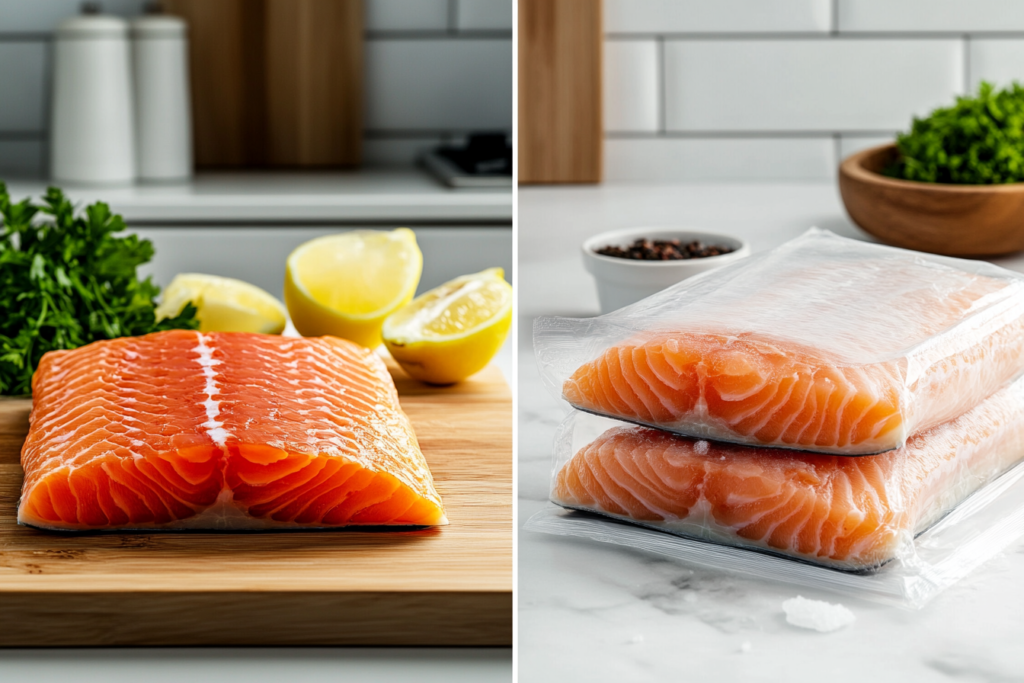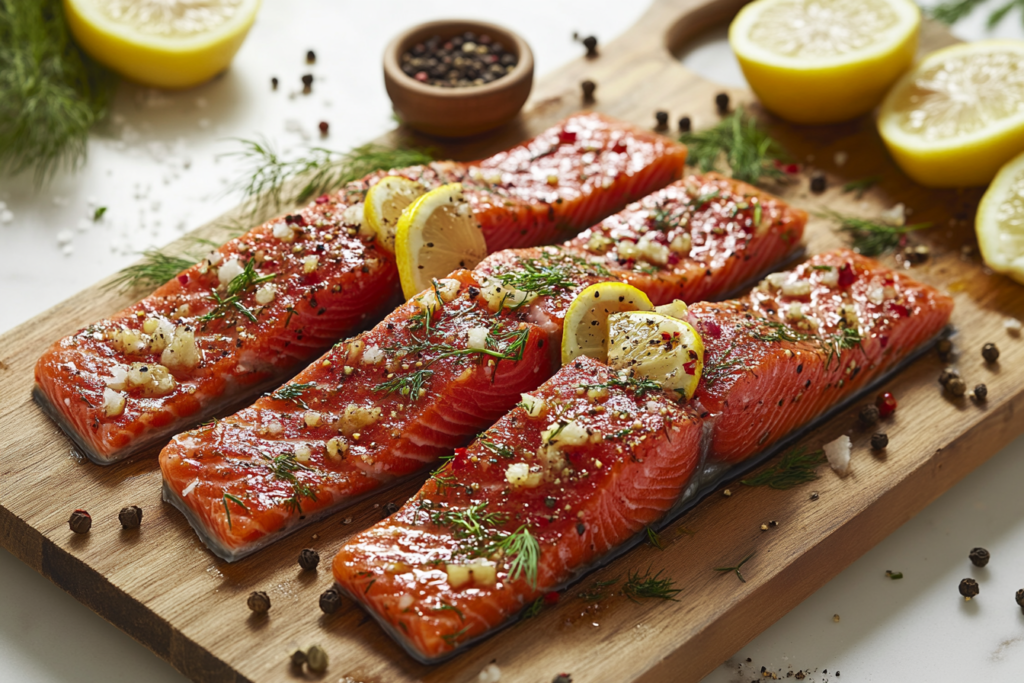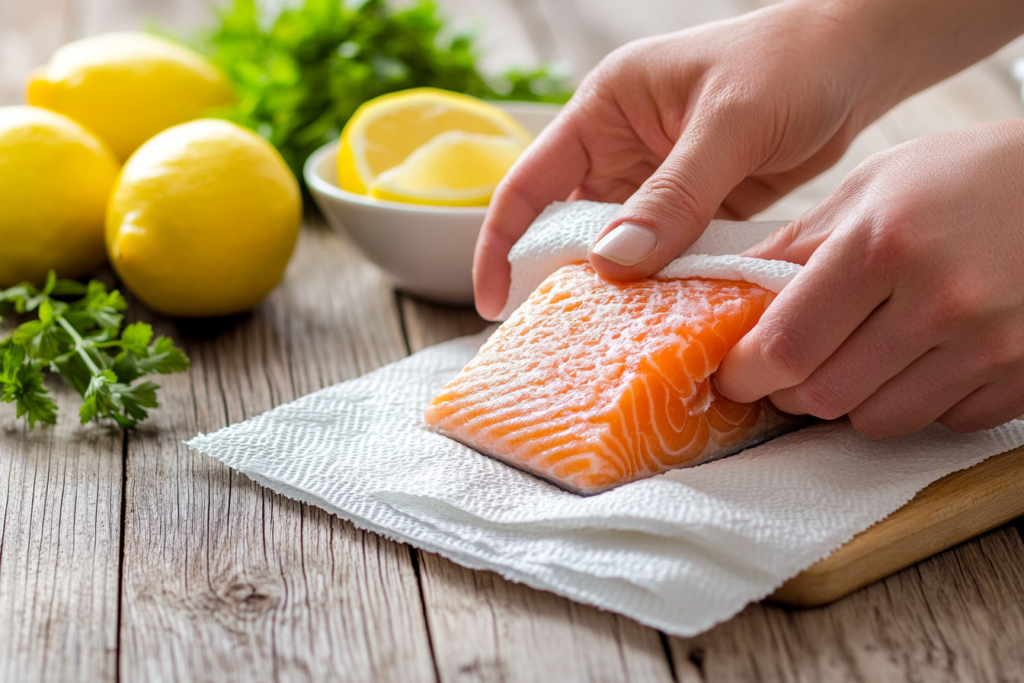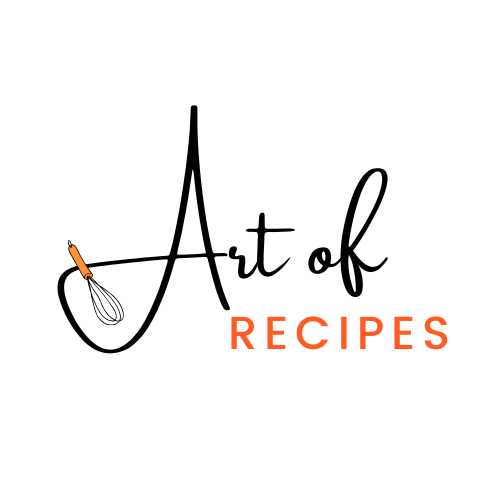Table of contents
Introduction: best ways to cook salmon
Salmon is a beloved dish for its rich flavor, versatility, and impressive health benefits. Whether you’re a home cook or an aspiring gourmet chef, preparing salmon perfectly can feel both exciting and intimidating. What’s the secret to achieving restaurant-quality salmon? It lies in the harmonious interplay of selecting the right fish, seasoning it thoughtfully, and mastering your cooking technique. This guide provides everything you need to know to make the best salmon every time.
Why Salmon is a Culinary Favorite
Salmon’s appeal lies in its unique combination of flavors, textures, and nutritional benefits. Its buttery, rich taste pairs well with a variety of seasonings, while its tender texture makes it a pleasure to eat. Beyond the dining table, salmon is celebrated as a superfood, rich in heart-healthy omega-3 fatty acids and high-quality protein.
Nutritional Benefits of Salmon
- Omega-3 Fatty Acids: Promote heart health, reduce inflammation, and support brain function.
- High-Quality Protein: Essential for muscle repair and maintenance.
- Vitamins and Minerals: Including B vitamins, potassium, and selenium, which contribute to overall health.
From grilled fillets to poached medallions, salmon can be adapted to any occasion and is as suitable for a casual meal as it is for fine dining.
Choosing the Right Salmon
The foundation of any great salmon dish starts with selecting high-quality fish. The type and source of salmon significantly affect its flavor, texture, and overall quality.
Wild vs. Farmed Salmon
- Wild-Caught Salmon: Often considered the gold standard, wild salmon such as sockeye or king salmon boasts a robust flavor and firm texture. These fish feed naturally in their environment, giving them higher omega-3 levels and a distinct taste.
- Farmed Salmon: Known for its milder flavor and higher fat content, farmed salmon is more affordable and widely available. Modern farming practices focus on sustainability, making it a viable option for many.

Recognizing Fresh Salmon
When shopping for salmon, freshness is key. Here’s what to look for:
- Vibrant Color: Salmon fillets should have bright, uniform hues—ranging from pale pink to deep red. Dull or faded colors indicate loss of freshness.
- Firm Texture: Fresh salmon will feel firm to the touch, with no visible gaps or mushiness.
- Clean Smell: A light, oceanic scent is ideal. A strong, fishy smell is a sign of aging fish.
- Moist Appearance: Fillets should appear moist but not slimy, with skin that is shiny and taut.
Frozen Salmon: A Viable Alternative
While fresh salmon is often preferred, high-quality frozen salmon can deliver excellent results. Flash-freezing techniques lock in flavor and texture, making frozen salmon a great option when fresh is unavailable. Be sure to thaw frozen salmon in the refrigerator overnight for optimal results.
The Art of Seasoning Salmon
Salmon’s natural flavor shines best when complemented by simple, high-quality seasonings. The right balance of salt, herbs, and spices can elevate your dish to extraordinary heights.

Simple Seasonings
- Salt and Pepper: A classic combination that enhances the fish’s natural sweetness.
- Citrus Accents: Lemon, lime, or orange zest add brightness and acidity, balancing the salmon’s richness.
- Herbs: Dill, parsley, thyme, or rosemary are excellent choices to enhance salmon’s earthiness.
Marinades for Depth of Flavor
Marinating salmon allows flavors to penetrate deeply, adding complexity and dimension. Some popular marinade ideas include:
- Soy-Ginger Marinade: A savory and slightly sweet blend of soy sauce, ginger, garlic, and honey.
- Lemon-Herb Marinade: A mix of olive oil, fresh lemon juice, garlic, and chopped herbs like dill and parsley.
- Spicy Maple Marinade: Maple syrup, Dijon mustard, and a pinch of chili flakes for a sweet-heat combination.
Pro Tip: Limit marination time to 30 minutes to an hour. Extended marination can overwhelm the salmon’s delicate flavor.
Preparing Salmon for Cooking
How you handle salmon before cooking can greatly affect the final dish. Proper preparation ensures the fish cooks evenly and develops a desirable texture.

Step 1: Pat Dry
Always pat the salmon dry with a paper towel. Removing surface moisture helps achieve a golden, crispy crust when pan-searing or grilling.
Step 2: Check for Pin Bones
Run your fingers along the flesh to locate and remove pin bones. Use fish tweezers or clean kitchen tweezers for this task.
Step 3: Bring to Room Temperature
Allow salmon to rest at room temperature for 15–20 minutes before cooking. This prevents the fish from cooking unevenly.
Step 4: Decide on Skin On or Off
Cooking salmon with the skin on protects the flesh and helps it retain moisture. The skin also crisps beautifully when pan-seared or grilled.
Cooking Methods for the Best Salmon
Mastering the right cooking method is the ultimate secret to achieving perfect salmon. Each technique highlights different aspects of the fish, from its silky texture to its crispy crust.
Pan-Seared Salmon
Pan-searing creates a beautifully golden crust while keeping the interior tender and flaky.
- Method: Heat a skillet over medium-high heat with oil. Place salmon skin-side down and press gently for even contact. Cook for 4–5 minutes, then flip and cook for another 2–3 minutes.
- Pro Tip: Add a pat of butter and fresh herbs in the last minute of cooking for added flavor.
Oven-Baked Salmon
Baking is a gentle method that delivers moist, evenly cooked salmon.
- Method: Preheat the oven to 375°F (190°C). Place salmon on a baking sheet lined with parchment paper or foil. Bake for 12–15 minutes, or until the flesh flakes easily.
- Pro Tip: Brush the salmon with olive oil or butter to keep it moist during baking.
Grilled Salmon
Grilling imparts a smoky, charred flavor that complements salmon’s richness.
- Method: Preheat the grill to medium heat and oil the grates. Grill salmon skin-side down for 6–8 minutes, then flip for an additional 4–5 minutes.
- Pro Tip: Use cedar planks soaked in water for an hour before grilling to infuse a subtle, woodsy flavor.
Poached Salmon
Poaching is ideal for a soft, delicate texture.
- Method: Simmer water or broth with aromatics like lemon slices, dill, and peppercorns. Lower the salmon into the liquid and cook for 10–12 minutes.
- Pro Tip: Serve poached salmon with a creamy sauce like dill yogurt for a refined presentation.
Sous Vide Salmon
Sous vide guarantees perfectly cooked salmon with unparalleled tenderness.
- Method: Vacuum-seal seasoned salmon and immerse it in a water bath set to 125°F (52°C) for 30 minutes. Finish with a quick sear in a hot pan.
- Pro Tip: Infuse sous vide bags with aromatics like garlic or herbs for additional flavor.
Pairing Salmon with Sides and Sauces
The best salmon deserves equally impressive accompaniments. Choose complementary sides and sauces to round out your dish.
Perfect Pairings
- Vegetables: Roasted asparagus, grilled zucchini, or caramelized Brussels sprouts.
- Grains: Wild rice, quinoa, or creamy mashed potatoes.
- Salads: A crisp green salad with a tangy vinaigrette balances the salmon’s richness.
Sauces to Elevate Your Dish
- Dill Cream Sauce: A tangy mix of yogurt, dill, garlic, and lemon.
- Mango Salsa: Fresh mango, red onion, cilantro, and lime for a tropical twist.
- Herb Butter: A simple blend of softened butter, parsley, and garlic.
Temperature: The Science of Cooking Salmon
Cooking salmon to the right temperature ensures it’s moist and flavorful. Use a meat thermometer for precision.
- Medium-Rare: 120°F (49°C) – Silky and slightly translucent in the center.
- Medium: 125°F (52°C) – Tender, flaky, and fully opaque.
- Well-Done: 140°F (60°C) – Firm and cooked through.
Pro Tip: Remove salmon from heat just before it reaches your desired temperature. Residual heat will continue to cook the fish as it rests.
The Secret to the Best Salmon
The Best Salmon Preparation Secret is a combination of high-quality fish, thoughtful
best ways to cook salmon, and mastering your cooking technique. Pay attention to every step—from selecting the freshest salmon to pairing it with complementary sides and sauces. Most importantly, cook with care, allowing the salmon’s natural flavors to shine.
Related Articles You Might Like
When crafting the perfect salmon dish, consider exploring related topics that enhance your understanding of salmon preparation and seasoning. For instance, if you’re looking for creative serving ideas, the Salmon Bites Recipe: Easy and Tasty Snacks offers a fun and delicious way to enjoy salmon as appetizers. To elevate your dish with complementary flavors, the Sauce Options for Salmon guide provides versatile pairing ideas. Choosing the right cooking fat is crucial for texture and taste, and Butter vs. Oil for Cooking Salmon breaks down the pros and cons of each. Additionally, for those aiming to master gourmet seasoning techniques, the insights in Gordon Ramsay’s Salmon Seasoning Tips can help you achieve restaurant-quality flavor at home. These resources complement your journey to unlocking the secrets to the best salmon.
Conclusion
Cooking salmon is as much an art as it is a science. By choosing fresh fish, experimenting with seasonings, and perfecting your cooking methods, you can achieve a dish that’s flavorful, tender, and visually stunning. Whether you’re pan-searing for a quick weeknight dinner or baking a whole fillet for a special occasion, these techniques will ensure your salmon is always the star of the table. Dive into this culinary journey and discover why salmon remains a timeless favorite for chefs and food lovers alike.
FAQs
What is the Tastiest Way to Cook Salmon?
Pan-searing is one of the tastiest ways to cook salmon, delivering a crispy, golden crust and a moist, flaky interior. Start by patting the salmon dry to help it sear evenly. Season with salt, pepper, and lemon zest for brightness. Heat a non-stick pan over medium-high heat, add a bit of oil, and place the salmon skin-side down. Press gently for even contact, cooking for 4–5 minutes until the skin is crispy. Flip and cook for another 2–3 minutes until the fish flakes easily. The high heat locks in moisture while creating a delightful texture contrast.
What Makes Salmon Taste Better?
Enhancing salmon’s natural flavor involves balancing its richness with complementary ingredients. Fresh, high-quality salmon is essential for the best results. Adding citrus like lemon or lime cuts through the richness and brightens the dish. Spices and herbs, such as dill, thyme, or paprika, provide subtle depth. Sweet-savory marinades like honey-soy or maple-mustard add caramelization and complexity. Cooking with garlic, shallots, or fresh herbs enhances the overall aroma. For a smoky flavor, try grilling salmon on a cedar plank or over charcoal.
How Does Gordon Ramsay Make the Perfect Salmon?
Gordon Ramsay’s technique for salmon emphasizes crispy skin and bold flavors. He starts by lightly scoring the skin to prevent curling, then seasons the fish with salt, pepper, and olive oil. Using a preheated skillet over medium-high heat, he cooks the salmon skin-side down for 4–5 minutes without moving it, ensuring crispness. After flipping, he cooks for another 2–3 minutes. Ramsay finishes by adding butter and fresh herbs like thyme or rosemary, basting the fish with the infused butter for extra flavor. This method achieves a crispy exterior and tender, flavorful flesh.
What Not to Do When Cooking Salmon
Overcooking is a common mistake, leaving salmon dry and tough. Use a meat thermometer and remove the fish from heat when it reaches 125°F (52°C). Avoid skipping the skin during cooking—it protects the flesh and keeps it moist. Cold salmon from the fridge can cook unevenly, so let it rest at room temperature for 10–15 minutes before cooking. Preheat the pan properly to prevent sticking and ensure even cooking. Finally, avoid overpowering salmon with excessive spices or sauces, and always let it rest for a few minutes before serving to retain its juices.

